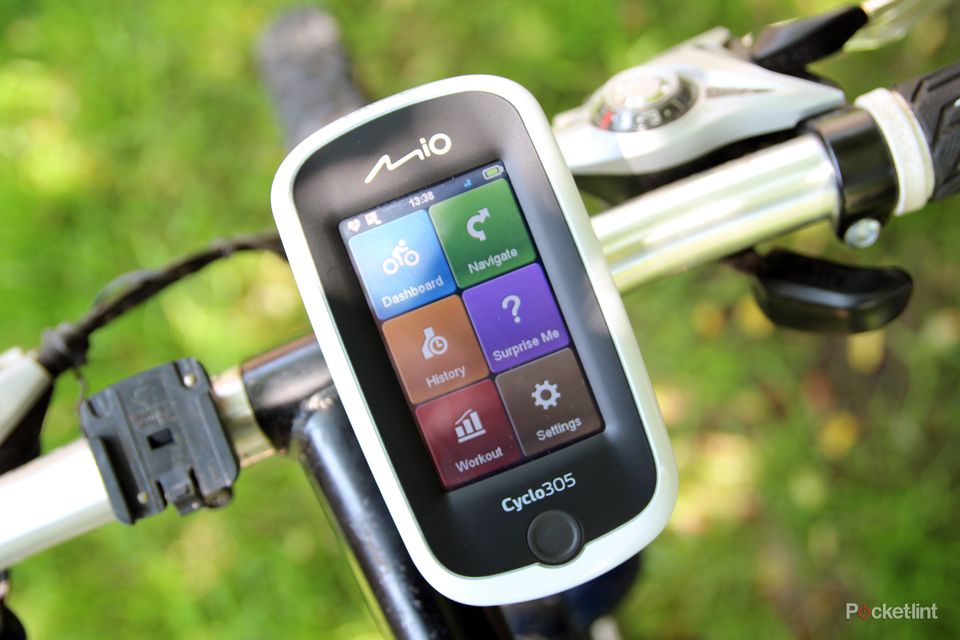Mio has announced a new line of bike computers which draws on the company's experience in the satnav arena. We've managed to get our hands on the Mio Cyclo 305 following its announcement yesterday.
The Cyclo 305 is a complete package for your bike, including the main computer itself, a heart rate strap, cadence and wheel sensors. The system works wirelessly, so it's just a question of strapping all the parts to your bike and you're good to go.
It took us about 15 mins to get it all in place on the bike and thankfully we found that the device recognised the sensors without any problems.
![]()
The 305 attaches to the handbars by clipping into a mount. This uses a rotation-style lock and feels pretty secure once in place. The large screen means you have plenty of space to tap your way through the user interface.
It's a resistive touchscreen, so while it doesn't offer the sort of resolution, response or experience that you'll get on a smartphone, that doesn’t really matter. We've yet to see how the display performs in bright sunshine or rain, but the icons all appear large enough to get to what you want.
The heart rate strap is also nice and comfortable, fastening with conventional press studs at the front. It's a great addition to the package, putting it on a par with some of the bespoke cycling systems from Polar or Garmin.
Of course the Cyclo 305 isn't pitched as a "training" accessory per se like the some rivals are, even though many of those functions are supported.
![]()
Using the workout section, you can set up an instant ride, plugging in what you want from it, the distance you want to cover and the average speed, and it will give you the duration and the option for a "surprise me" route.
Surprise me is a nice function (from what we've seen so far) because it will plot routes and present you with three options. It's great for adding variety to rides and means you don't have to scratch your head wondering where to go.
The GPS mapping is really interesting, because you get both bike and car navigation options. We're yet to really explore the presentation of maps and routes, but so far it's been easy to find addresses by postcode and plot road routes.
Of course, with this being an IPX7 certified device, we fully intend on putting it through it's paces both on the road and in the wilds, where we'll get a better sense of just how well all these functions work.
We'll be drumming up a full review over the next few weeks, so check back for all the details once we've hit the trails.

